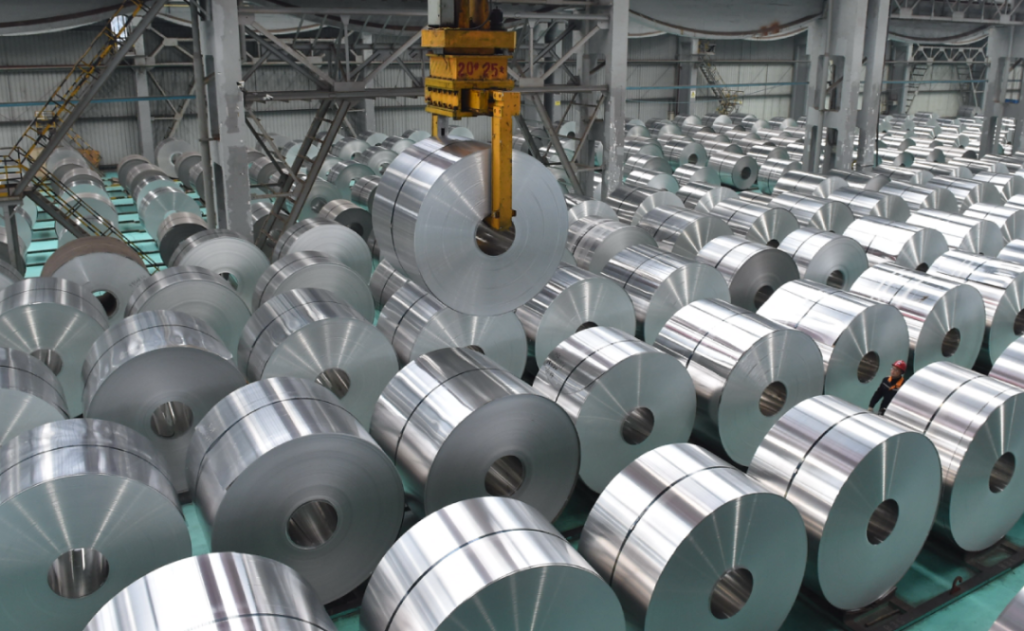Introduction
In May 2024, the global production of electrolytic aluminum (excluding China) continued its upward trajectory, underscoring the metal’s pivotal role in numerous industries. Aluminum’s unique properties, such as high strength-to-weight ratio, corrosion resistance, and excellent conductivity, make it indispensable in construction, transportation, and manufacturing. Alongside production growth, the focus on aluminum surface treatments has intensified, especially within the construction industry where aesthetics are paramount.
Global Electrolytic Aluminum Production Statistics
In May 2024, global electrolytic aluminum production reached 2.5005 million tons, marking a 3.82% year-on-year increase and a 3.35% rise from the previous month. Despite global economic uncertainties, this stable growth highlights the aluminum industry’s resilience. The average daily output of 80,700 tons, consistent with April’s figures, further emphasizes the continuity in production.
Production Capacity and Utilization
By the end of May 2024, the global (excluding China) electrolytic aluminum production capacity was 35.949 million tons, with an operating capacity of 28.703 million tons, resulting in a 79.84% operating rate. This gap between total and operating capacity indicates significant potential for future expansion. The ability to scale production to meet rising demand is a positive sign for the industry.
Factors Driving Production Growth
Several key factors contribute to the growth in electrolytic aluminum production:
Economic Recovery and Infrastructure Development: The global economic recovery and increased infrastructure projects have boosted demand for aluminum, particularly in construction and transportation.
Technological Innovation and Industrial Upgrading: Advances in technology and efforts to upgrade industrial processes have enhanced production efficiency and quality.
Government and Enterprise Initiatives: Governments and companies are actively investing in the aluminum sector, promoting sustainability and innovation.
Future Outlook for Electrolytic Aluminum Production
Looking ahead, the forecast for global electrolytic aluminum production in June 2024 is 2.42 million tons. Although slightly lower than May’s production, the overall trend remains stable. This forecast reflects market confidence in the industry’s ability to meet future demand and maintain growth. Stakeholders are optimistic about the continued expansion and innovation within the aluminum sector.
Surface Aesthetic Treatments for Aluminum Plates
The aesthetic appeal of aluminum plates is increasingly important in the construction industry. Various surface treatments enhance both the appearance and performance of aluminum plates:
Acrylic Immersion Paint: This high-performance, environmentally friendly product is widely used for its good corrosion resistance, anti-aging, and wear resistance. It offers a bright, hard surface with excellent adhesion and fast drying times.
Electrophoretic Painting: Commonly used in Japan, this treatment provides a smooth surface and enhanced corrosion resistance, making it highly popular for aluminum plates.
Powder Electrostatic Spraying: Known for enhancing corrosion resistance, this method offers superior protection against acids, alkalis, and salts compared to oxidized coloring.
Frosted Fabric: This treatment reduces interference highlights and provides a smooth, silk-like surface, which is highly appreciated in certain environments.
Multi-Color Surface Treatment: To meet the needs of designers, various color treatments are applied to aluminum plates, which must be polished and oxidized for the best effect.
Plasma Enhanced Electrochemical Surface Ceramicization: Utilizing advanced technology, this method produces aluminum plates of excellent quality. Although costly, it offers superior performance and a variety of color options.
Conclusion
The global electrolytic aluminum industry has demonstrated remarkable growth and resilience in May 2024. Driven by economic recovery, technological advancements, and strategic investments, the industry is well-positioned for future expansion. The focus on innovative surface treatments further enhances the versatility and appeal of aluminum plates in the construction industry. Continuous monitoring of industry trends and capacity utilization will be crucial for sustaining this growth trajectory.

